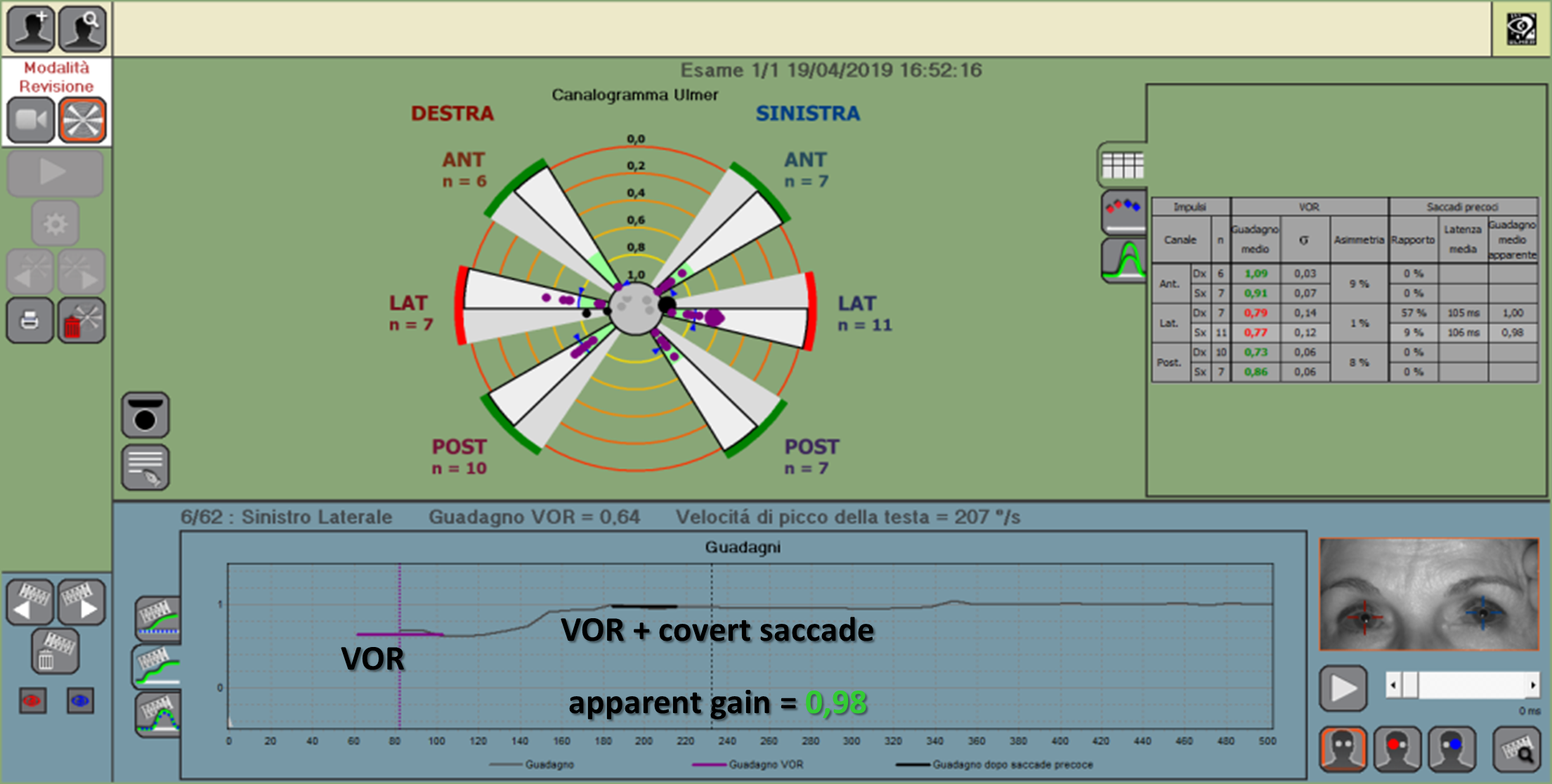Comparison between vHIT Remote Camera and vHIT Head Mounted
There are two types of tools for recording vHIT: one with a remote camera and one with an accelerometer head mounted.
The first paper on a device for recording the Head Impulse Test was written by Erik Ulmer et al. in 2005, using a remote camera placed in front of the patient. Upon closer inspection, however, the same device was presented a year earlier in 2004 at the XXIII International Congress of the Bárány Society in Paris. The program details can be found here.
The initial paper on a vHIT based on an accelerometer placed on goggles came from Konrad P. Weber et al. in 2009.
Now, let's summarize the main advantages of the "no goggles" philosophy, i.e., the device with a remote camera placed in front of the patient, which eliminates the need for positioning a mask on the head:
- Absence of devices placed on the patient’s face:
- The mask cannot be accidentally moved.
- No interference with handling the patient’s head.
- No device to sanitize, no disposables, no spare parts.
- Simultaneous binocular record for the LSC:
The eye (right, left, both) to be analyzed can be chosen.

- Automatic detection of eye position and stimulation plan:
- The eye's position (center, right, or left) is automatically recognized without manual intervention.
- The stimulation plan is automatically recognized without manual intervention.
- A minimum of 5 impulses is sufficient for each canal:
- Shorter examination, usually completed in less than 5 minutes.
- More comfortable examination for the patient.
- Face size (children) is no longer a problem:
- Thanks to Sylvette Wiener-Vacher at Hôpital R. Debré - Paris, you can find two videos (click here to watch them):
- the first is about vHIT testing of a 9-year-old child,
- the second is about vHIT testing of a 10-month-old child, demonstrating how easily assessments can be conducted on children.
- Thanks to Sylvette Wiener-Vacher at Hôpital R. Debré - Paris, you can find two videos (click here to watch them):
Additional characteristics specific to the vHIT remote camera device are also worth mentioning:
- Graph of the gaze line’s orientation:
Evaluation not only of the velocity graph (the most common), but also of the line of the gaze. This tells us if the gaze can stay on/return to target.

- Review the video of each impulsive movement:
Precise evaluation of eye movements in slow motion to easily recognize artifacts.

- Graphical and numerical analysis of covert saccades:
Calculation of the apparent gain after covert saccade.

Regarding VHIT software, apparent gain at a given time is the ratio of global eye movement to maximum head movement. It is measured after the first early saccade and indicates whether, after this early saccade, the patient's gaze came back completely or partially towards the target. Apparent gain and VOR gain should not be confused. VOR gain is measured during head movement and before the beginning of any eventual saccade. In the canalogram, the apparent gain is represented by a black dot in the half-branch of each semicircular canal. In the results table, the last column on the right side represents the mean apparent gain for each semicircular canal.
- vHIT remote camera does not require any calibration procedure, thanks to the fixed focus of the camera at 90 cm. It is only necessary to position the patient at the right distance to obtain sharp images: an easy operation thanks to the unmotorized camera that allows fine and fast positioning adjustments.
- As there are no goggles, there are no slippage artifacts.



 Go to the top
Go to the top

 International - English
International - English Italia - Italiano
Italia - Italiano France - Français
France - Français USA - English
USA - English